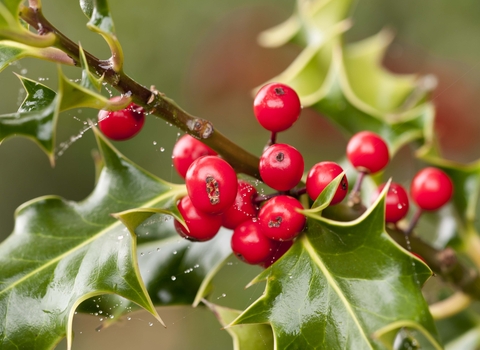
©Ross Hoddinott/2020VISION
Holly
Holly is a much-loved evergreen tree - its shiny, spiky leaves and bright red berries being a favourite in Christmas decorations. Found in all kinds of habitats, it provides an important winter food source for birds.

©Ross Hoddinott/2020VISION